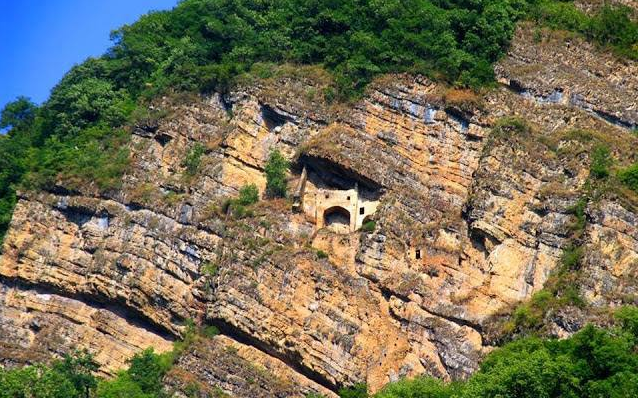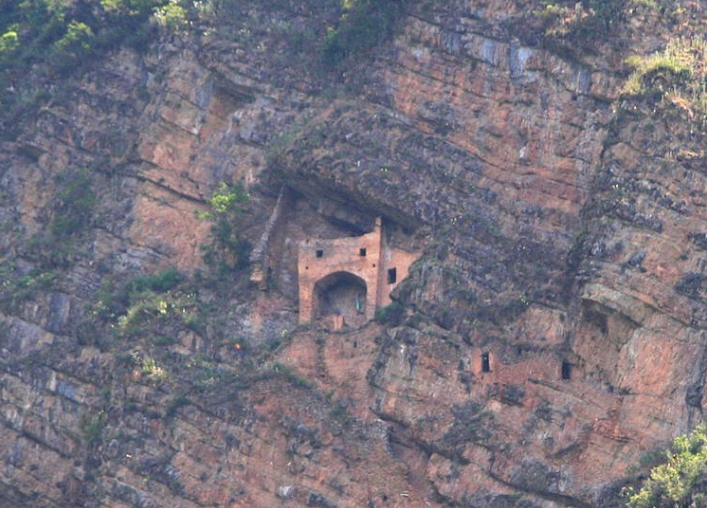Parigala – Azerbaijan’s Mysterious Fairy Castle
Nestled at the foothills of the Caucasus Mountains in northwest Azerbaijan, a remarkable archeological enigma awaits curious explorers: Parigala, the Fairy Castle. Carved into the near-vertical face of a rock cliff, this centuries-old structure remains shrouded in mystery, with very little information available about its origins and purpose.
The fact that Parigala is relatively unknown as an archeological treasure in Azerbaijan can be attributed to the country’s still developing tourism industry and the challenging journey required to reach the site. Off the beaten path, adventurers must embark on a four-wheel drive vehicle, navigating narrow tracks and scaling slippery slopes covered in foliage to reach the cliff that houses Parigala. Undoubtedly, this arduous journey makes it a destination for only the most intrepid of travelers.
According to the scarce information available, Parigala consists of a limestone brick façade that seals the entrance to a cave dwelling comprising three rooms. Few individuals have ventured to explore the site firsthand, with the last recorded ascent made by a local man named Mammad Darudov in the 1970s. Despite his efforts to make the climb more accessible by erecting a makeshift ladder and placing a tree trunk at the base, no one has replicated his feat since then.
The true purpose behind the construction of Fairy Castle remains a captivating enigma. Popular folklore surrounding the site dates back to the time of Genghis Khan, the Mongol conqueror. Legend tells of a local ruler whose daughter was chosen to be one of Genghis Khan’s wives. In a bid to escape the Mongol leader’s advances, the daughter, named Pari, ordered the construction of a castle high atop a cliff, beyond the reach of the Mongol army. Tragically, faced with the Mongol army closing in, Pari leaped to her demise from the castle. Although this tale provides some narrative context, it is the only available source shedding light on Parigala’s history.
Privacy and safety appear to have been paramount concerns for the builders of Parigala. Even today, with modern mountaineering equipment, reaching Fairy Castle remains a formidable challenge. The steep ascent alone poses a significant obstacle, while potential defenders positioned above could easily repel any approaching force. Whether this fortress-like structure was ever defended or conquered remains a mystery.
Approaching Parigala involves ascending an enclosed stairway constructed with rough limestone bricks, cemented firmly to the mountainside. Unfortunately, the top portion of the stairway has collapsed, making the journey to the castle even more treacherous. Climbing beyond this point requires exceptional agility and mountaineering skills, as noted by journalist Ronnie Gallagher.
According to Mammad Darudov, one of the few individuals to have glimpsed the interior of Parigala in recent decades, the castle comprises three rooms, each featuring its own windows. Additionally, there is a second structure connected to the main castle via walled walkways, boasting two additional rooms.
Considering its estimated dating to the Albanian Caucasian period (between the 4th and 8th centuries), Parigala has remarkably withstood the test of time and the elements. While the mystery surrounding its origins and purpose may never be fully unraveled, this very enigma contributes to its undeniable allure.
Parigala beckons adventurers to embrace the unknown, to stand at the intersection of history and intrigue. With each visit, individuals become part of the ongoing narrative, weaving their own stories within the walls of this timeless and captivating Fairy Castle.
Hits: 0




